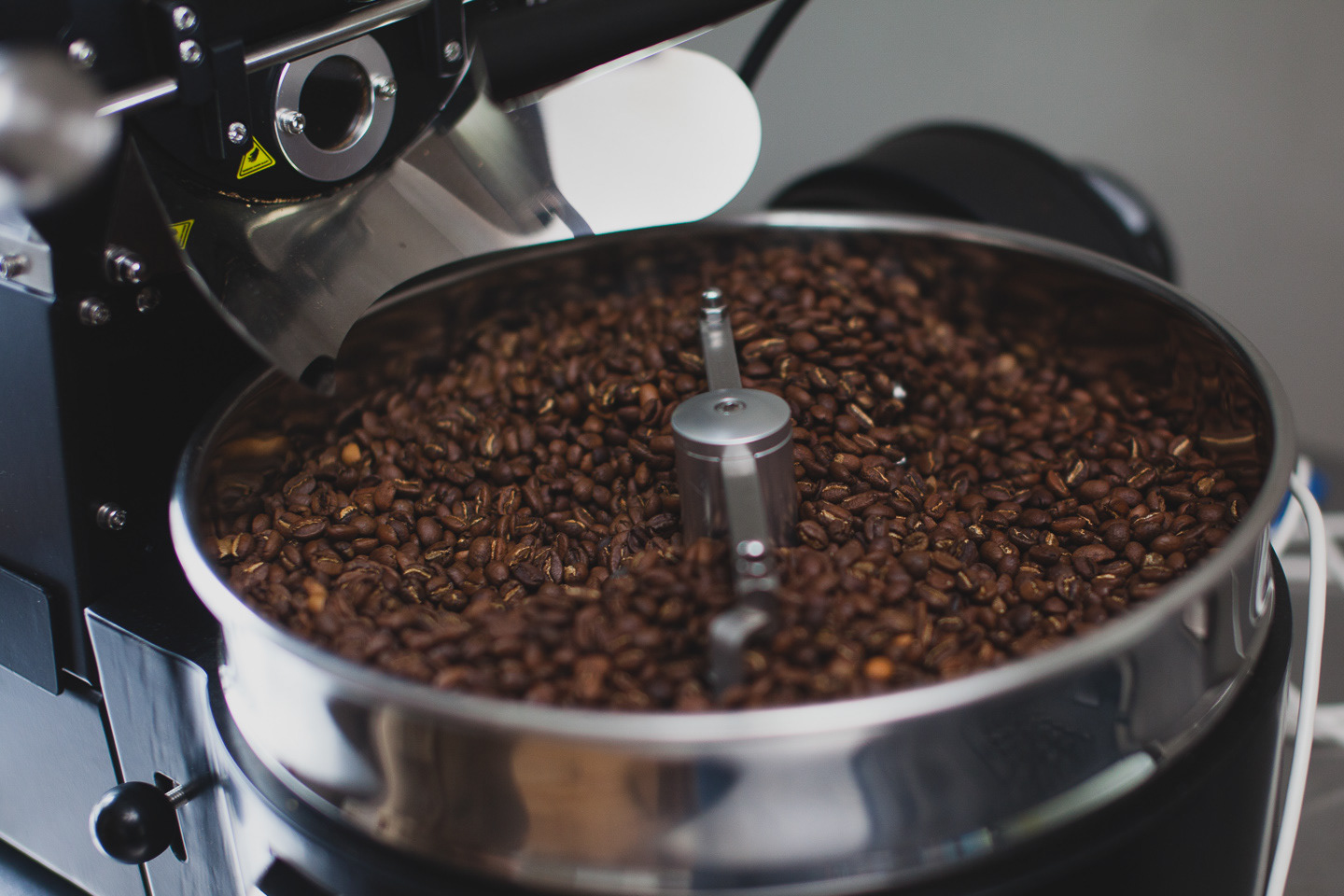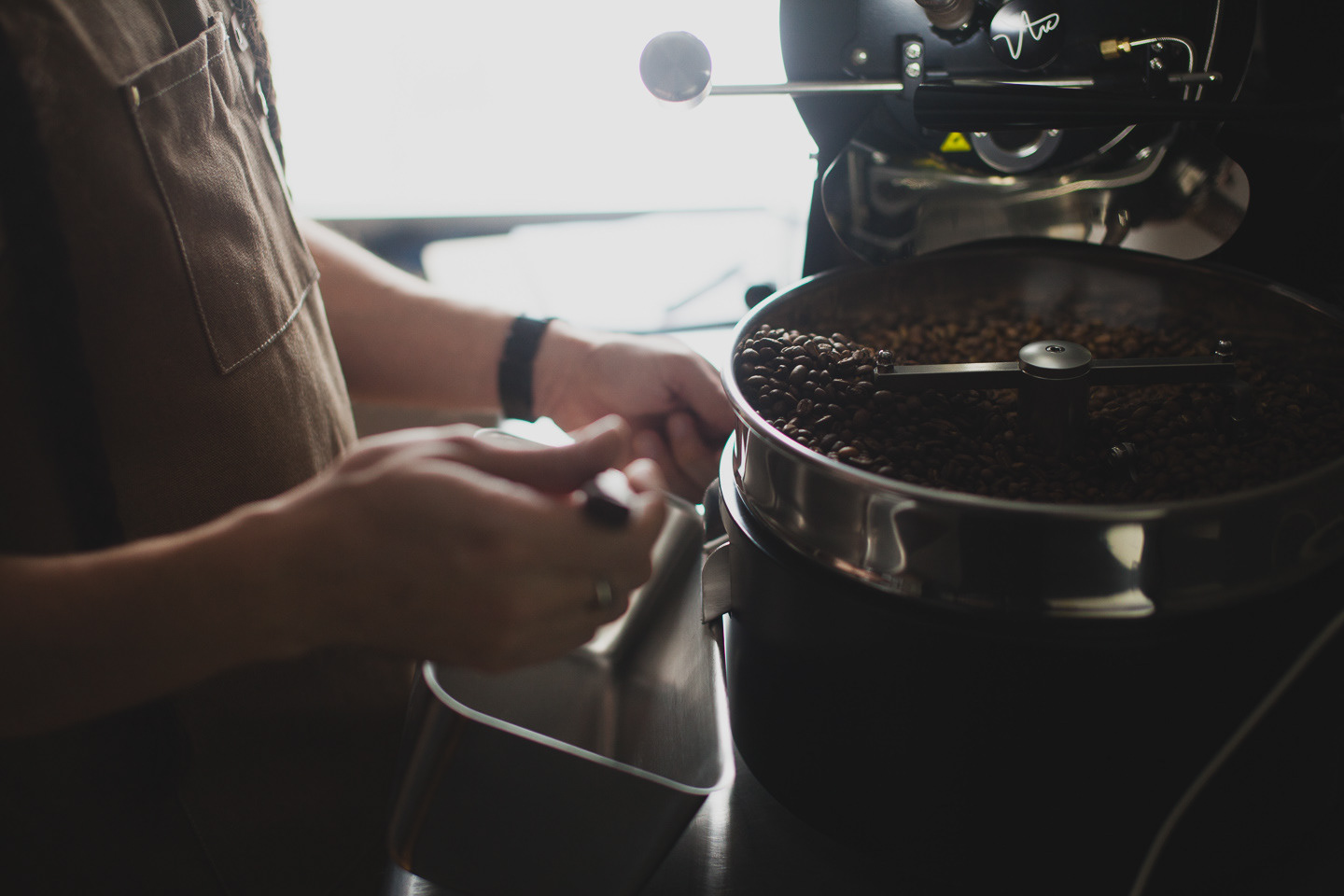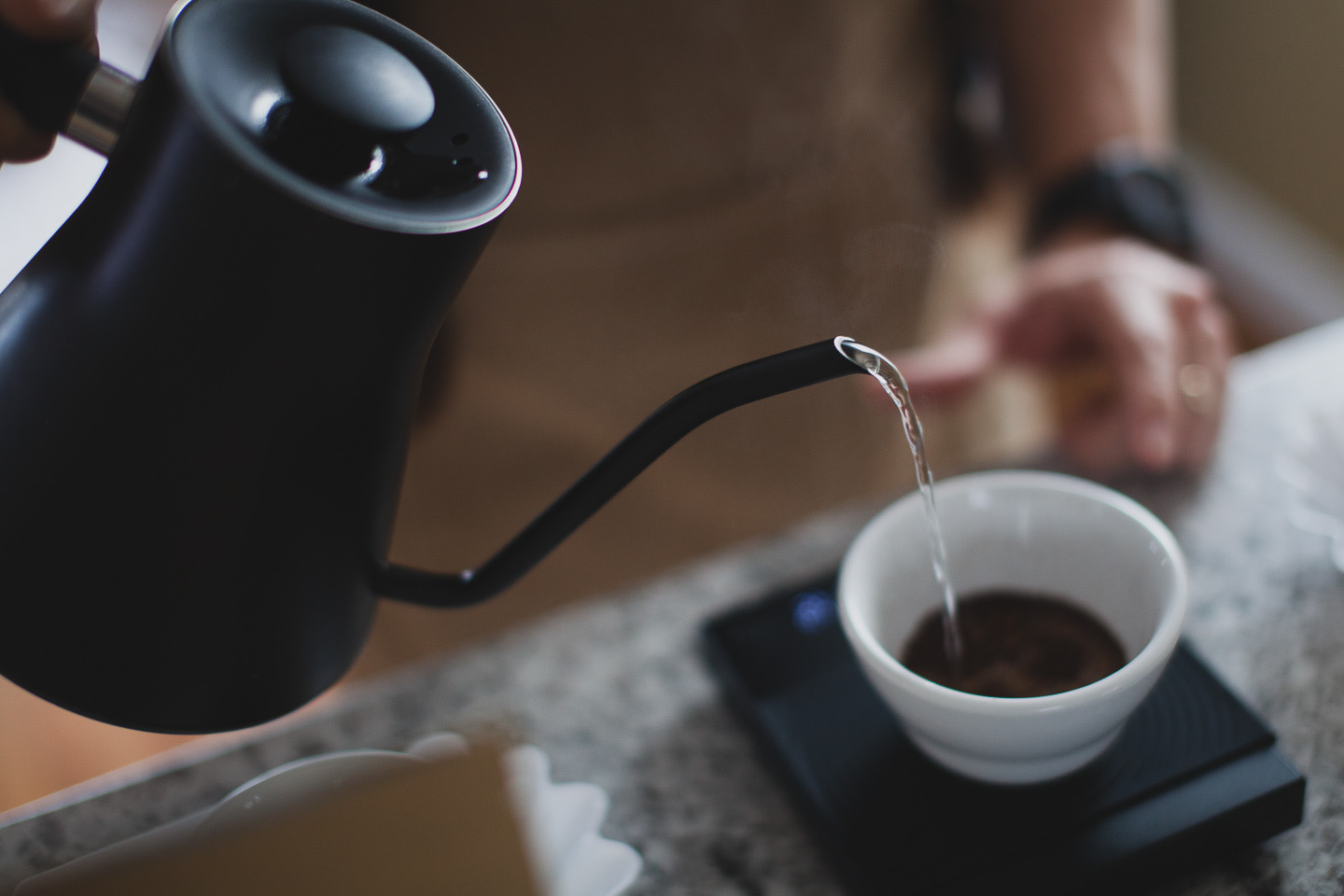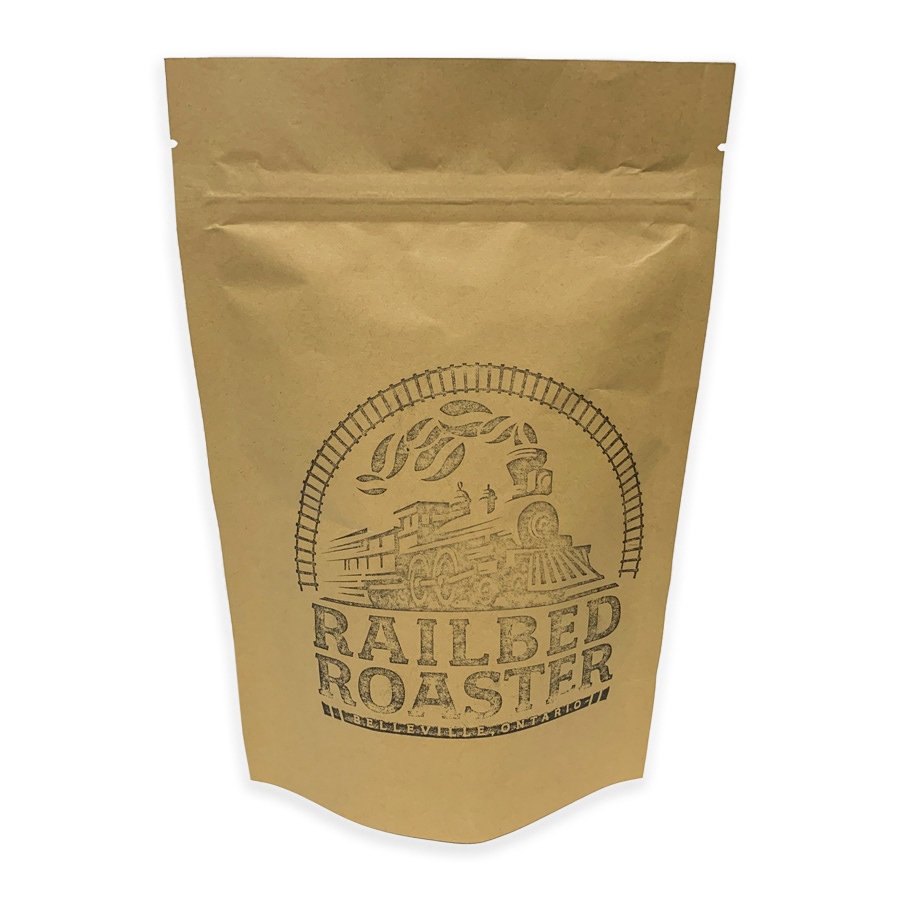MWP DECAF Mexico La Pluma de Lachao
$18.00
Roast: Medium
Country: Mexico
Region: Sierra Sur, Oaxaca
Community: Lachao, UNECAFE
Process: Fully Washed, Mountain Water Processed Decaffeinated
Grade: 84
Flavour Profile: Raisin, Cashew Butter, Chicory, Lemon, Molasses, Vanilla
Elevation: 1700-1900m
Varietals: Typica la Pluma and less than 10% of Mundo Novo
Certifications: USDA Organic, NOFA-NY Certified Organic
Weight: 240 Grams
Bag Style: Resealable, Vented Pouch
Our Impression: What’s most exciting about this decaf is that it is from the same producers as my previous Mexican coffee roast I had available from November 2022 to February 2023 – except this is the decaffeinated version of that same bean! In cupping this coffee, you really get a forward cashew mouth-feel with that latent molasses flavour that is familiar with the beans from this producer. It has wonderful notes to taste while winding down at the end of your work day, or paired with your after-dinner dessert.
$18.00
Roast: Medium
Country: Mexico
Region: Sierra Sur, Oaxaca
Community: Lachao, UNECAFE
Process: Fully Washed, Mountain Water Processed Decaffeinated
Grade: 84
Flavour Profile: Raisin, Cashew Butter, Chicory, Lemon, Molasses, Vanilla
Elevation: 1700-1900m
Varietals: Typica la Pluma and less than 10% of Mundo Novo
Certifications: USDA Organic, NOFA-NY Certified Organic
Weight: 240 Grams
Bag Style: Resealable, Vented Pouch
Our Impression: What’s most exciting about this decaf is that it is from the same producers as my previous Mexican coffee roast I had available from November 2022 to February 2023 – except this is the decaffeinated version of that same bean! In cupping this coffee, you really get a forward cashew mouth-feel with that latent molasses flavour that is familiar with the beans from this producer. It has wonderful notes to taste while winding down at the end of your work day, or paired with your after-dinner dessert.
Try this Aeropress Recipe with this coffee!
This recipe was introduced by a customer of Railbed Roaster! This recipe really pulls a very balanced cup from the coffee. Comparing a side-by-side of the Mountain Water Processed decaffeinated coffee with the original non-decaffeinated beans, the decaffeination process took out some of the molasses-like sweetness from the bean. So this Aeropress recipe is designed to pull out a little bit of that sweetness, but accentuates the body of this roast, leaving you with a very strong roasted cashew flavour, and a pleasant mouth-feel.
This recipe was introduced by a customer of Railbed Roaster! This recipe really pulls a very balanced cup from the coffee. Comparing a side-by-side of the Mountain Water Processed decaffeinated coffee with the original non-decaffeinated beans, the decaffeination process took out some of the molasses-like sweetness from the bean. So this Aeropress recipe is designed to pull out a little bit of that sweetness, but accentuates the body of this roast, leaving you with a very strong roasted cashew flavour, and a pleasant mouth-feel.
Coffee: 18g
Water: 160g Third Wave Water (standard profile)
Water Temp: 94c
Brewer: Inverted Method
Filter: Standard Aeropress paper filter - rinsed
Grind: 7M on the Baratza Vario. (4/10, 1=espresso, 10=french press)
Brew time: 1:35
Water: 160g Third Wave Water (standard profile)
Water Temp: 94c
Brewer: Inverted Method
Filter: Standard Aeropress paper filter - rinsed
Grind: 7M on the Baratza Vario. (4/10, 1=espresso, 10=french press)
Brew time: 1:35
0:00 - pour 100g water into Aeropress in a swirling motion, agitating all grind, then the remaining 60g with a steep center pour
0:45 - stir in crust with a chopstick then place filter and flip to cup
1:05 - press out coffee over 30 seconds
- add 80g of water to your cup of coffee
0:45 - stir in crust with a chopstick then place filter and flip to cup
1:05 - press out coffee over 30 seconds
- add 80g of water to your cup of coffee
Enjoy!
Oaxacan coffee is grown on small plots spread over a large, diverse range. Well, three ranges actually. Oaxaca is where the Sierra Madre del Sur and Sierra Mixteca ranges come together to form the Sierra Madre Occidental as it heads north. If you follow these ranges south of Oaxaca city towards the coast you find a unique climate – soft, pine-filled forested mountains that give way to steep, craggy coffee fields as you head into the heart of La Pluma. This is the district of Sierra Sur, and home to the coffee that made Mexico famous. La Pluma Hidalgo is a region within Sierra Sur, and the namesake for the La Pluma varietal (a type of typica). Before La Roya hit, this region was filled with buyers. With easy access to buyers and premiums, most farmers did not organize – and those that did had a hard time surviving the crash that came. The result is a mountain full of independents knit together by family relationships. Strong farmers in the region collect from their neighbours, separate tops out for us, and help us to get from 6 bags per family up to truck-load levels. Yet Joaquin Santana bucks this trend, and many other conventions, in the face. He is head of UNECAFE – Unidad Ecogica para El Sector Cafe Oaxaquenos. This 48 member group is held together by Joaquin’s will, appeal to the benefits of cooperation, and incessant cell use. While the group only meets a few times a year, Joaqin tours the different stations once a month to drink coffee with members, trade tips and talk shop. He is one of the few Spanish speakers in the group, and one with a phone, a car, and enough space in his house to stage coffee for pickup during harvest. But, aside from his personality, the proof is in the pudding.
The group’s success is apparent – since forming in the early 90s, members have grown to have an average of 5 hectares per person, each hectare of which produces 800-1200 pounds of export grade coffee (3-4 times the average). This is due to aggressive organic practices, constant pruning, and the continual investment in new trees. This is the heart of La Pluma, and there is pride that comes with planting this specific varietal. All in all we see why they refer to themselves as a “Toda Madre.”
The group’s success is apparent – since forming in the early 90s, members have grown to have an average of 5 hectares per person, each hectare of which produces 800-1200 pounds of export grade coffee (3-4 times the average). This is due to aggressive organic practices, constant pruning, and the continual investment in new trees. This is the heart of La Pluma, and there is pride that comes with planting this specific varietal. All in all we see why they refer to themselves as a “Toda Madre.”







